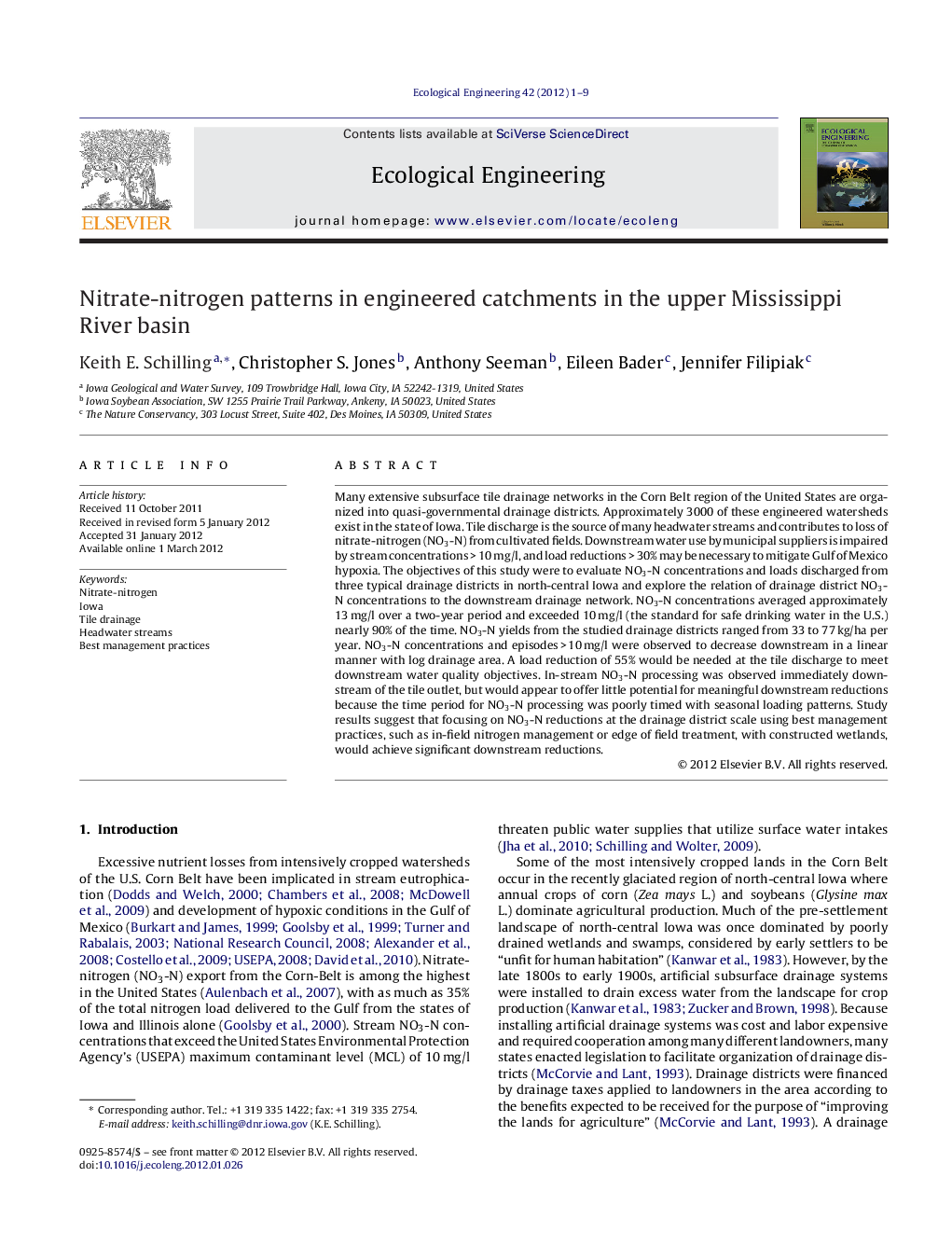| Article ID | Journal | Published Year | Pages | File Type |
|---|---|---|---|---|
| 6302741 | Ecological Engineering | 2012 | 9 Pages |
Abstract
Many extensive subsurface tile drainage networks in the Corn Belt region of the United States are organized into quasi-governmental drainage districts. Approximately 3000 of these engineered watersheds exist in the state of Iowa. Tile discharge is the source of many headwater streams and contributes to loss of nitrate-nitrogen (NO3-N) from cultivated fields. Downstream water use by municipal suppliers is impaired by stream concentrations > 10 mg/l, and load reductions > 30% may be necessary to mitigate Gulf of Mexico hypoxia. The objectives of this study were to evaluate NO3-N concentrations and loads discharged from three typical drainage districts in north-central Iowa and explore the relation of drainage district NO3-N concentrations to the downstream drainage network. NO3-N concentrations averaged approximately 13 mg/l over a two-year period and exceeded 10 mg/l (the standard for safe drinking water in the U.S.) nearly 90% of the time. NO3-N yields from the studied drainage districts ranged from 33 to 77 kg/ha per year. NO3-N concentrations and episodes > 10 mg/l were observed to decrease downstream in a linear manner with log drainage area. A load reduction of 55% would be needed at the tile discharge to meet downstream water quality objectives. In-stream NO3-N processing was observed immediately downstream of the tile outlet, but would appear to offer little potential for meaningful downstream reductions because the time period for NO3-N processing was poorly timed with seasonal loading patterns. Study results suggest that focusing on NO3-N reductions at the drainage district scale using best management practices, such as in-field nitrogen management or edge of field treatment, with constructed wetlands, would achieve significant downstream reductions.
Related Topics
Life Sciences
Agricultural and Biological Sciences
Ecology, Evolution, Behavior and Systematics
Authors
Keith E. Schilling, Christopher S. Jones, Anthony Seeman, Eileen Bader, Jennifer Filipiak,
